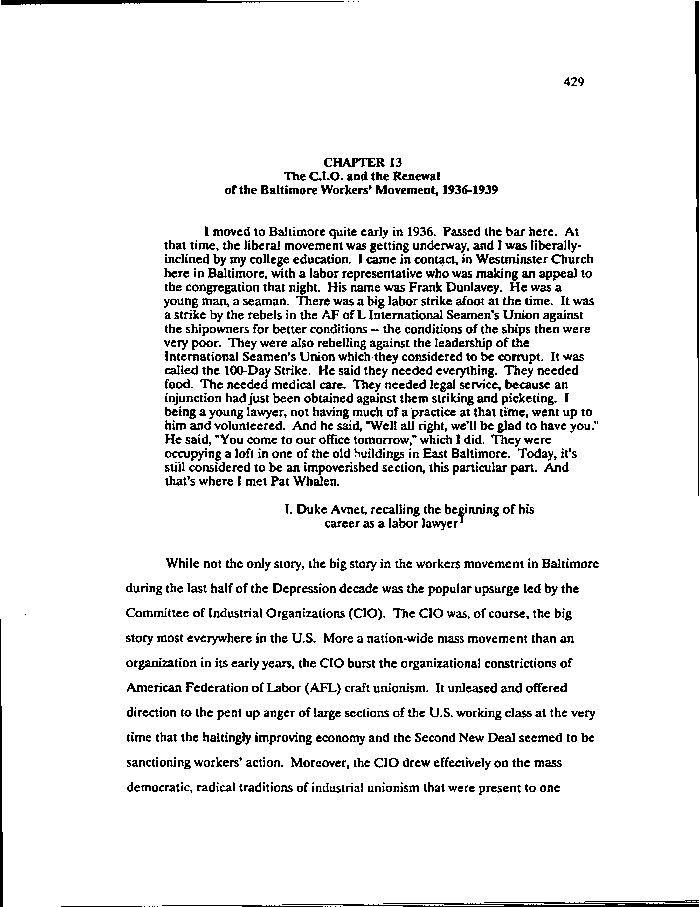|
429
CHAPTER 13
The C.I.O. and the Renewal
of the Baltimore Workers' Movement, 1936-1939
I moved to Baltimore quite early in 1936. Passed the bar here. At
that time, the liberal movement was getting underway, and I was liberally-
inclined by my college education. I came in contact, in Westminster Church
here in Baltimore, with a labor representative who was making an appeal to
the congregation that night. His name was Frank Dunlavey. He was a
young man, a seaman. There was a big labor strike afoot at the time. It was
a strike by the rebels in the AF of L International Seamen's Union against
the shipowners for better conditions — the conditions of the ships then were
very poor. They were also rebelling against the leadership of the
International Seamen's Union which they considered to be corrupt. It was
called the 100-Day Strike. He said they needed everything. They needed
food. The needed medical care. They needed legal service, because an
injunction had j'ust been obtained against them striking and picketing. I
being a young lawyer, not having much of a practice at that time, went up to
him and volunteered. And he said, "Well all right, we'll be glad to have you."
He said, "You come to our office tomorrow," which I did. They were
occupying a loft in one of the old buildings in East Baltimore. Today, it's
still considered to be an impoverished section, this particular part. And
that's where I met Pat Whalen.
I. Duke Avnet, recalling the beginning of his
career as a labor lawyer"
While not the only story, the big story in the workers movement in Baltimore
during the last half of the Depression decade was the popular upsurge led by the
Committee of Industrial Organizations (CIO). The CIO was, of course, the big
story most everywhere in the U.S. More a nation-wide mass movement than an
organization in its early years, the CIO burst the organizational constrictions of
American Federation of Labor (AFL) craft unionism. It unleased and offered
direction to the pent up anger of large sections of the U.S. working class at the very
time that the haltingly improving economy and the Second New Deal seemed to be
sanctioning workers' action. Moreover, the CIO drew effectively on the mass
democratic, radical traditions of industrial unionism that were present to one
|

